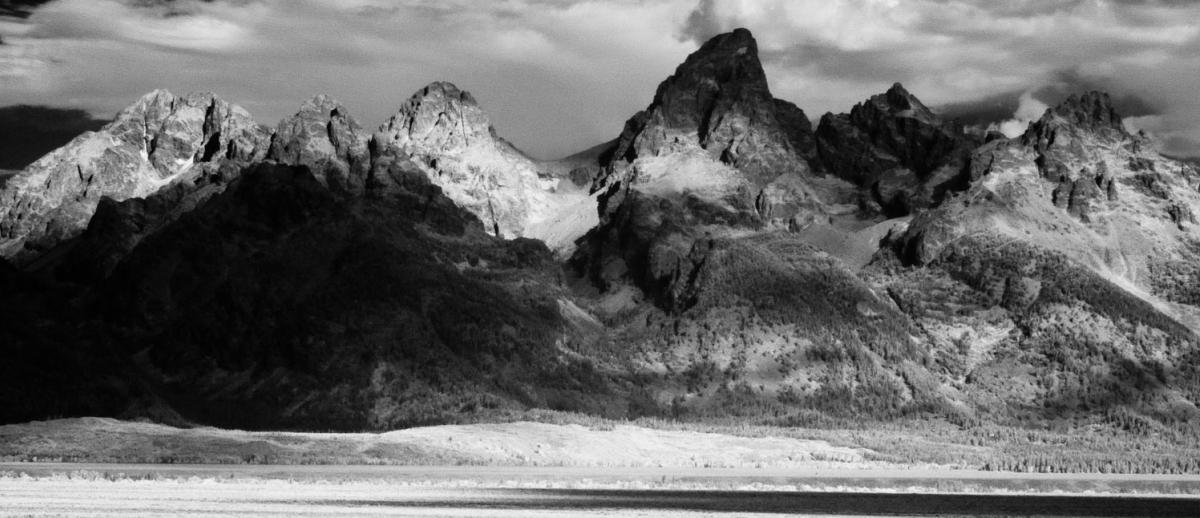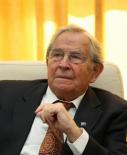Public Space: Thinking at the Edge of the Cave
archive


Public Space: Thinking at the Edge of the Cave
What is to be learned is a dispossession.
- Maurice Merleau-Ponty
What is “the public”? What do we mean by “public space” or “public sphere”? What kind of space is this, and how can we find it? Is it just an outer or external space contraposed to an inner or internal one? Is it the case that, when we leave our home, we enter a different space, a public one? And if we cannot find it, can we simply construct it, fabricate it, or imagine it (using our faculties of reason, will, and imagination)? Perhaps, the space we are talking about is more like what Martin Heidegger called “world”—which, as he told us, is neither outside nor inside, neither an external object nor an inner/subjective faculty because it is located on an entirely different (an “ontological”) level. Heidegger has written much about space and spatiality, which I shall not repeat here. Late in his life, in 1969 he wrote an essay on “Art and Space” (Die Kunst und der Raum). There we read: “Space—does it not belong to those Ur-phenomena at whose encounter (in Goethe’s words) human beings are overcome by awe and even anguish? For behind it, there is nothing to which it could be further traced.”1
As one can see, the question of public space is not simply a matter of physical or geometrical extension; in a way, it shares the awe surrounding spatiality as such. Clearly, the “public” is not just the “others,” nor is it me; it is neither their property nor mine. Differently put: it cannot be appropriated, instrumentalized or controlled by any side. In traditional languages, the public is something “in-between” or “metaxy” (as Plato called it), and even something beyond “in-between” because it involves what makes the “between” possible. To this extent, the public has an ethical quality, or perhaps an ethical-spiritual quality, because genuine ethics is always transformative, a move beyond you and me. This is why dealing with the “public” is always a demanding or challenging enterprise; it means participating in a happening or “event’ (Ereignis) stretching us beyond ourselves.2 In Heideggerian language, the happening is neither an external fate, nor can it be engineered. It occurs at the edge of human self-interest—or, if you will, at the edge of the Platonic “cave.”
In traditional languages, the public is something “in-between”... even something beyond “in-between” because it involves what makes the “between” possible. To this extent, the public has an ethical quality...
Contrary to widespread opinion, the momentous quality of the public event has not disappeared in modernity. In fact, despite secularization, commercialization, and the rise of scientism and technology, the public lives on in uncanny, subterranean ways. While in earlier times the public was anchored or instantiated in substantive institutions—like monarchy or empire—this anchor has vanished with the onset of democracy. Since that time, the center of gravity has shifted or has moved out of sight. But although out of sight, it has not varnished. In his book Democracy and Political Theory, French philosopher Claude Lefort has clearly addressed the “out of sight” character of the democratic public space. In a chapter instructively titled “The Permanence of the Theological-Political,” he speaks of the public center of democracy as an “empty place” or “empty space.” To be sure, “emptiness” here does not mean a sheer vacuum, but rather something like a hidden resource or generative power. In this sense, it is close to Heidegger’s view of “nothingness” (das Nichts) and to the Buddhist “emptiness” (sunyata). The main point is that this center cannot be appropriated, possessed and exploited for partisan aims. As Lefort writes: “Of all the regimes we know, [democracy] is the only one to have represented [public] power in such a way as to show that it is an empty place. . . . It does so by virtue of discourse which reveals that power belongs to no one; that those who exercise power do not possess it; that they do not, indeed, embody it.”3

17th century English land enclosure and forcible expulsion
Unhappily, democracy in recent times has been moving precisely in the opposite direction, namely, the direction of appropriation, ownership, and embodiment. In Lefort’s time, the chief danger to emptiness was totalitarianism, predicated on the identification of the public with “the people as One.” In the meantime, other kinds of dangers have emerged, most prominently a predatory capitalist system (styled “neo-liberalism”) bent on surrendering everything in society to individual and corporate appropriation. Political theorist Bonnie Honig recently published a remarkable book called Public Things, subtitled Democracy in Disrepair. Although, on the surface, the title “Public Things” is just a routine translation of the Latin res publica, Honig injects into the phrase a radical twist which exposes the “disrepair” of contemporary democratic politics. Although upholding the need for publicly shared concerns, her book also launches an indictment: namely, that increasingly such concerns are reified and objectified and thereby transformed into targets for individual or corporate appropriation. As she writes: “My focus on public ‘things’ is occasioned in part by the contemporary impulse to privatize everything”—where privatization involves schools, prisons, military forces and ultimately even the “White House” as the seat of American government.4 Honing here agrees with fellow-theorist Wendy Brown who has called attention to “the stealthy work of neoliberal rationality” in our time. Although leaving the shell of democracy intact, neoliberal strategy—for both Honig and Brown—ultimately undermines democracy and “hollows it out” from within: “People are now trained to think of themselves as a resource to be invested in for future profits or earnings, not as subjects of integrity or . . . as stewards of shared futures.”5

Lands taken for sugar cane plantation in Sierra Leone. Photo: Le Temps, Grain.org
Behind the scenes, other issues are subtly stirred up in Honig’s book involving the status of “thinghood.” Although taking her bearing from D. W. Winnicott’s “object-relations” theory, Honig’s notion of “thing” may not be the same as “object” (since the latter always involves a subject-object relation, with objects serving as targets of acquisitive subjects). Maybe “thing” is closer to what I said before about “space” and “public space”; at least in the treatment of Heidegger, “thing” is a relational notion, a gathering of elements in the “fourfold.” [6] From this perspective, things share in the awesome or noumenal aura surrounding spatiality. The cultivation and preservation of things are a human-transhuman challenge. Wedded to the maintenance of “public things,” democracy emerges also as a human-transhuman challenge or as an ethical-spiritual task. Honig seems to be in accord on this point when she writes that her entire argument is “in favor of embracing publicness in democratic life, for the sake of democratic life, because public things constitute citizens equally as citizens, or ought to, and can be made, sometimes, by action in concert, to deliver on that promise.”7
Honig here throws into relief the status of democratic citizenship when she says that the public or “public things” constitute citizens as citizens (and not the other way around). Strictly interpreted this means that citizens do not actually “constitute” or engender the public space; rather they become citizens by virtue of that space. Thus, whenever individual or corporate agents seek to seize or appropriate the public space, democratic citizenship vanishes, and with it democracy itself. This may be the meaning (or one of the meanings) of Sheldon Wolin’s well-known statement about the “fugitive” character of democracy, about democracy’s tendency to slip from one’s grasp as soon as it is treated as a property or instrument of political control. Against this tendency, Wolin marshaled a completely different conception according to which democracy is construed not as a reified structure, but rather as “a mode of being” that derives from struggle and bitter experience but remains “a recurrent possibility” as long as the meaning of the public survives.8
Citizens do not actually “constitute” or engender the public space; rather they become citizens by virtue of that space. Thus, whenever individual or corporate agents seek to seize or appropriate the public space, democratic citizenship vanishes, and with it democracy itself.
What follows from these considerations is a lesson about public agency. As indicated before, individuals become citizens and public agents by virtue of the public space. Seen in this light, citizens are not “sovereign” masters, but participants in the multilayered “happening” of that space. To this extent, they are bound together not just by “interests,” but by bonds which, in a way, point beyond the edge of the cave: toward a realm of non-possession, non-domination and freedom. In traditional language, this direction is called the “good life.” Honig in this connection speaks appropriately of a “promise”—which means that “good life” refers not so much to a factual condition as to a possibility or potentiality. Moving—however haltingly—in this direction, citizens inevitably have the character of stand-ins, precursors or heralds of things “to come.”9 Richard Falk uses the term “citizen pilgrims.”10 The goal of the journey here cannot be concretely described or pinpointed because it is more in the nature of a call. But all of us, remembering keenly the despair inside the cave, are impelled by an urgent plea: the plea for what we call—almost breathlessly—the city of justice and peace.

"Gyarah Murti" (Eleven Figures) Monument, New Delhi -- M. Gandhi leading the Salt March. Source: Wikimedia
1 Martin Heidegger, Die Kunst und der Raum; L’Art et l’Espace (St. Gallen: Erker Verlag, 1969),
Time, trans. John Macquarric and Edward Robinson (New York: Harper & Row, 1962),
paragraphs 22-24, pp. 135-148. His view of space is in many ways akin to the notion of
“topos” as articulated by the Japanese philosopher Kitaro Nishida.
2 On Heidegger’s notion of “Ereignis” see especially his book Das Ereignis (Gesamtausgabe,
3 See Claude Lefort, Democracy and Political Theory, trans. David Macey (Minneapolis, MN:
see his “What is Metaphysics?” in David F. Krell, ed., Martin Heidegger: Basic Writings
(New York: Harper & Row, 1977), pp. 95-112. See also my “Sunyata East and West:
Emptiness and Global Democracy,” in my Beyond Orientalism: Essays on Cross-Cultural
Encounter (New York: SUNY Press, 1996), pp. 175-199.
4 See Bonnie Honig, Public Things: Democracy in Disrepair (New York: Fordham University
(Ithaca, NY: Cornell University Press, 1993); “The Politics of Public Things: Neoliberalism
and the Routine of Privatization,” NoFo, vol. 10 (2013), pp. 59-76; and her stirring “The
President’s House is Empty,” Boston Review, January 19, 2017.
5 Honig, Public Things, pp. 13-14; see also Wendy Brown, Undoing the Demos:
Jodi Dean, “Neoliberalism’s Defeat of Democracy,” Critical Inquiry, October 17, 2015,
goo.gl/40rQBR.
6 See Heidegger, “Das Ding,” in Vorträge und Aufsätze, vol. 2 (Pfullingen, Germany:
7 Hoing, Public Things, p. 11.
8 See Sheldon S. Wolin, “Fugitive Democracy,” in Seyla Benhabib, ed., Democracy
University Press, 1996), pp. 31-45; also my “Beyond Fugitive Democracy,” in
Achieving Our World: Toward a Global and Plural Democracy (Lanham, MD: Rowman
& Littlefield, 2001), pp. 71-89. Compare in this context also Jean Bethke Elshtain,
Democracy on Trial (New York: Basic Books, 1995), a text which sees democracy
today chiefly threatened by the onslaught of boundless individual and corporate
self-aggrandisement.
9 Honig seems to be open to the spiritual or noumenal quality of the public trajectory.
(p. 106, note 14) that the book “maybe read as a kind of education to miracle”
because it “presupposes and teaches attentiveness, receptivity, preparation,
orientation.” As she adds: “Democratic theorists may learn from Rosenzweig.
Receptivity to miracle has its secular political analogues, one example of which is
the power of public things to gather us together.”
10 See Richard Falk, “An Emergent Matrix of Citizenship: Complex, Uneven, and Fluid,”
(New York: Routledge, 2002), pp. 27-28. Compare also my Democracy to Come:
Politics a Relational Praxis (New York: Oxford University Press, 2017); and
The Promise of Democracy: Political Agency and Transformation (New York: SUNY
Press, 2010).



